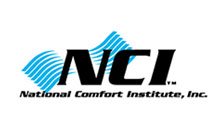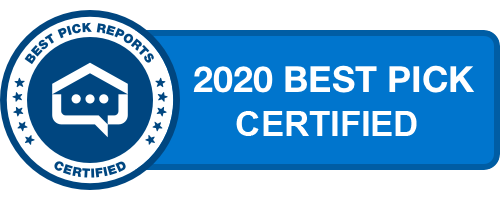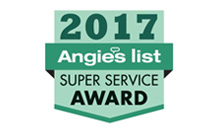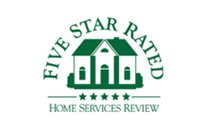Heating and cooling systems are some of the most important investments you’ll ever make in your home. Whether you’re buying a new house, renovating an old one or making an emergency purchase because “old faithful” finally conked out, there’s a lot riding on the choices you make: Your comfort and safety are at stake, but so is your wallet.Americans typically spend about 46 cents of every dollar they pay in utility bills for “space conditioning.” You can lower those costs by selecting the most energy-efficient equipment that meets your needs and fits your budget.The Energy Guide label on home heating and cooling equipment is intended to help you do just that. These labels provide a “snapshot” of the more in-depth energy efficiency and usage information that manufacturers are required to provide with their products — generally through a fact sheet or industry association directory.
Why should I care about energy efficiency?
The total cost of an appliance has three components — the purchase price, the cost of repairs and maintenance, and the cost to operate it. The more energy efficient an appliance is, the less it costs to run and the lower your utility bills. Using less energy is good for the environment, too; it can reduce air pollution and help conserve natural resources.
Is there really that much of a difference among the various models on the market?
All products must meet minimum energy efficiency standards set by the Department of Energy. But many products beat the standard, use even less energy and cost less to run.
Is one system more efficient than another?
Most of the differences are on the inside — in the motors, compressors, pumps and valves. So even if two models look the same from the outside, these less-obvious features can mean a big difference in your monthly utility bills.
How can I be sure energy efficiency claims are not just sales hype?
Manufacturers must use standard tests developed by the Department of Energy to prove the efficiency of their products. Many have these tests performed by independent laboratories. The test results are reported on the EnergyGuide labels, and through fact sheets provided by the manufacturers or in industry association directories.
An Energy-Smart Deal on Home Heating & Cooling…
Ask your builder, installer or home supply outlet about the EnergyGuide label and the fact sheets or product directories for each system you’re considering.
Compare the energy efficiencies and operating costs of competing models.
Consider both the purchase price and estimated operating costs when you decide what to buy.
Before You Buy…
Conduct an energy audit. This will help you detect energy waste, gauge the efficiency of your current heating and cooling systems, and determine if conditioned air is being distributed properly. Your utility company may offer free or low-cost energy audits or a do-it-yourself kit. You also can hire a specialist to do a more comprehensive — and more expensive — energy audit.
Weatherize your home. Check the caulking, weatherstripping and insulation, and make any necessary repairs. This may enable you to install a smaller, less expensive heating or cooling system to get the same results.
Compare the performance of different brands and models. Study the product literature. Will the product do the job? How energy efficient is it? What’s its repair history? Will it handle your needs today? Ten years from now? Does it fit your budget?
Estimate how much the appliance will cost to operate. The more energy an appliance uses, the more it costs to run. Consult the EnergyGuide labels, the manufacturers’ fact sheets or the industry association directory to compare the energy efficiency of different models. The difference on your monthly utility bill can be significant, especially when considered over the lifetime of the products. You can save money over the long run by choosing a more energy-efficient model, even if it costs more initially.
Ask about special energy efficiency offers. Ask your local utility or salesperson if there are cash rebates, loans or other incentive programs in your area for buying energy-efficient products — and how you can qualify.
How Do You Say “Efficiency”?
Heating and air conditioning systems have a language all their own…
If your’re referring to furnaces and boilers, it’s”annual fuel utilization efficiency,” or AFUE.
For room air conditioners, it’s”energy efficiency ratio,” or EER.
For central air conditioners and heat pump cooling, it’s “seasonal energy efficiency ratio,” or SEER.
For heat pump heating, it’s “heating seasonal performance factor,” or HSPF.
Tips for Lowering Your Monthly Energy Bill
Being an energy-smart consumer means getting the most from the energy you use.
- Shade your room air conditioner from direct sun. This will reduce its workload.
- Clean the filters monthly and replace as necessary to save energy and reduce dust and pollen in the air. Lower the setting when you go out to reduce operating costs.
- Vacuum air vents, baseboard heaters and radiators regularly to remove dust that reduces heating efficiency. Move furniture, carpet or curtains that restrict their operation. If yourr baseboard heaters have movable deflectors or vents, open them in the winter and close them in the summer.
- Schedule annual tune-ups for your heat pump, furnace or boiler.
- Check to see if your utility company provides this service.
- Hire a professional to seal and insulate leaky ducts, and to ensure that the airflow distribution system serving your heating or cooling equipment is operating at peak efficiency.
- Check your attic, attic stairway, attached garage walls and basement to ensure that you have proper insulation between conditioned and unconditioned spaces.
- Open your foundation vents each spring if your home has a crawl space under it. Close the vents in the winter.
Prune back shrubs that may block airflow to your air conditioner or heat pump. - Consider installing ceiling fans. The air circulation promotes cooling in the summer and heating efficiency in the winter.


















